Shadow Of Mordor: Performance Testing And Benchmarks
Fresh on the heels of the final Hobbit movie, we bring you our game performance review of Middle-Earth: Shadow of Mordor. This innovative title has a few pleasant surprises up its sleeve when it comes to hardware requirements.
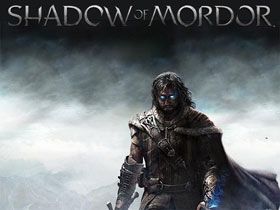
Welcome To Mordor; I’m Galadriel Made It
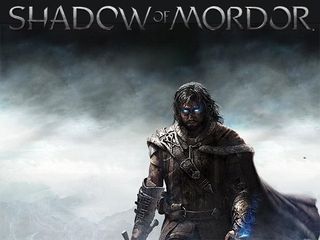
Monolith has produced a lot of memorable games powered by the company's proprietary Lithtech engine, including Aliens Vs. Predator 2, Tron 2.0, the F.E.A.R. series, and many more. On a personal level, though, I have to admit that none of them wowed me by breaking out of the mold. As a result, I didn't expect much from Monolith's newest release, Middle-Earth: Shadow of Mordor (despite an admitted fondness for Tolkien's intellectual property).

And then I played the game. In my opinion, Monolith took a giant leap forward as a game studio with Shadow of Mordor, a project that takes the best features of multiple genres and spices it up with truly unique mechanics and a wonderful meta-game. The smooth combat and animation does Batman one better, with Assassin’s Creed-style stealth and parkour, Far Cry's tower map reveal mechanic, a well-rendered narrative and the introduction of the Nemesis system. At first glance, it may seem like this game is trying to be something it’s not, but after you give it a chance, it sucks you in.
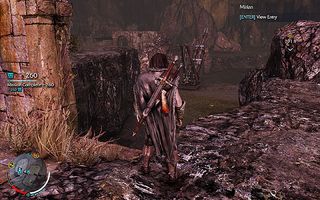
Shadow of Mordor kicks off between the events of The Hobbit and The Lord of the Rings. You play as Talion, a ranger in the defense of Gondor. Sadly, his family is murdered in a heart-wrenching cinematic immediately following the tutorial. Before he leaves his mortal coil, however, he is joined by an Elvish Wraith and saved (or banished, depending how you look at it) from death. Confused and disturbed by this state of affairs, he is thrown another curve ball and wakes up in a form of Mordor crossed between the past and future. Talion sets out on a wild (yet well-structured) adventure to discover why he is bound to the Wraith, and what happened to the life he knew.
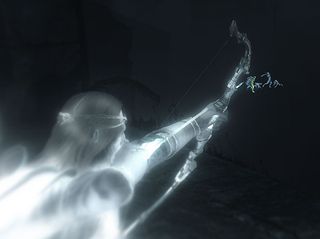
Being attached to an ancient Elven Wraith is an interesting state of affairs. When Talion is partially covered by a shadow, the wraith's ghost glows through in an effect similar to what we saw in the first Pirates of the Caribbean film. The character also has the ability to enter the Wraith world, as seen in the Lord of the Rings films, where his elf counterpart can strike at range with his otherworldly bow. By the way, this bow, like the ranger's sword and knife, can be upgraded throughout the game via a nifty legendary weapon system.
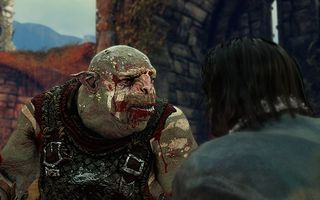
One does not simply walk into Mordor, but once you're there it's astonishingly easy to find someone who wants to kill you. You might not be making any friends, but thanks to the nemesis system built into the game's heart, you're guaranteed to make more than a few enemies. This innovative mechanic tracks your interactions with various Orcs in Sauron's army, and conjures consequences on a personal level. For instance, if you accidentally push an Orc into a fire, he'll probably feel a burning desire to get even. Thus spawns a love-hate relationship that continues as you run away like a coward, or face the poor disfigured Orc. The system creates a unique experience for each individual; every enemy's personality is different, as are their appearances and abilities. As mentioned, they remember everything you’ve done in their presence, whether you rode a Caragor into battle against them or you missed that first shot at them with an arrow.
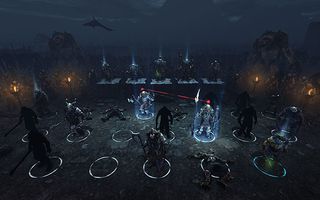
The system goes even deeper by tracking high-ranking members of Mordor's fighting force. Unique Orc captains have particular strengths and weaknesses. Gain intel by interrogating their minions and learning strategies to defeat them. This brings the game's brilliant death penalty system into play. As a Wraith, you can't die, of course. But the monster who manages to defeat you gains a frightening amount of power when you take enough damage to be temporarily banished. In addition, any members you've dispatched from the Orcish chain of command are replaced with fresh blood. When the Orc that did you in gets a promotion for his efforts, insult is added to injury. It feels personal.

The combat in this adventure/RPG should be familiar to fans of the latest Batman series, as well as Assassin’s Creed. While other games tote a similar play style, Shadow of Mordor does a great job of refining the genre in a meaningful way. For instance, unlike Batman, when you're prompted to block, time doesn’t slow down. It continues at a regular speed, forcing you to stay on your toes.
Stay on the Cutting Edge
Join the experts who read Tom's Hardware for the inside track on enthusiast PC tech news — and have for over 25 years. We'll send breaking news and in-depth reviews of CPUs, GPUs, AI, maker hardware and more straight to your inbox.

Its not all hack-and-slash, either. There are many variables to consider before taking on the likes of Thrak Death Blade (above). Are there archers nearby that will hear? What about his body guards? Throw in a few spearmen and a pack of Caragors and you have a recipe for disaster. Mordor isn't a walk in the park, even for an immortal Wraith, so careful planning goes into every battle. Find Orcs with information about your target because knowing the strengths and weaknesses of the enemy is key to a successful encounter.
Movement is reminiscent of Assassin’s Creed, with similar parkour and wall climb animations. At times, this gets clunky as you try to run around a corner and suddenly shimmy or hide behind the wall instead of continuing on your way. But despite a few annoyances, it's a solid system.

The map is full of valuable information. Icons are differentiated by color and other indicators that tell you what missions are near, where a marked target is located and even the location of herbs able to heal you. Through this interface, you can also view Sauron’s Army, with information on the Orc chain of command.

Talion is a hurt and angry protagonist (who could blame him?). However, he does have a conscience, and there are times when you'll have the opportunity to free human slaves in Mordor. You cover a lot of ground during the story, but its plot progresses quickly, and your ultimate goal is revealed early on. Pay close attention because many questions you might have about the character are answered as you regain your memory. It's a good substitute for the lack of detailed introduction to the characters.
Current page: Welcome To Mordor; I’m Galadriel Made It
Next Page Image Quality, Settings And Test Setup-
Neilbob It's nice, for once, to see a game that doesn't particularly favour one brand of CPU or GPU over another. A slight advantage for AMD on the GPU side perhaps, but nothing extraordinary.Reply -
blackmagnum I hope it doesn't ruin the Tolkien franchise and gets competitive with the Elder Scrolls.Reply -
Cryio Poor Nvidia buyers.Reply
The 760 was for some time a recommended card in its price bracket because of 7950 performance at a lower price and now it's slower than a 270X, which is a 7870.
Not to mention the 280/285 is usually same price or cheaper than the 760.
Pff. -
Cryio Seems like I'll have to play the game with textures on Medium on my 560 Ti.Reply
Do they look decent enough at that level of quality ? -
slyu9213 I have to say my experience with Textures has been the same as your testings. With my 7850 1GB they recommended Low Textures but I had minimal impacts when I Medium Textures. Additionally the game recommends Medium Textures for 2GB of VRAM but I was able to run High Textures on my 650M with minimal to no impacts (DDR3 version). By the looks it seems they really are conservative and everyone may be able to run one texture quality higher than the game recommends.Reply -
Sakkura I wonder why the R7 250X was not tested at 1080p Medium. It did very well at 1080p Lowest, so it would have been nice to see if it was still playable at Medium. Would have been more useful to know whether it would run at 25 or 40 FPS than to know that the R9 285 runs at 93.7 FPS at those settings.Reply -
photonboy Sakkura,Reply
You can't expect them to run every combination of cards and settings. There's enough information here to help someone decide whether to buy or if they have what settings to use.
Most Popular

